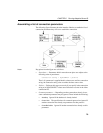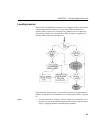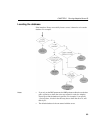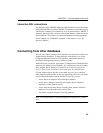
Using an integrated login
86
Using an integrated login
The integrated login feature allows you to maintain a single user ID and
password for both database connections and operating system and/or network
logins. This section describes the integrated login feature.
Operating systems
supported
Integrated login capabilities are available for the Windows NT server only. It
is possible for Windows 95, Windows 98, and Windows NT clients to use
integrated logins to connect to a network server running on Windows NT.
Benefits of an
integrated login
An integrated login is a mapping from one or more Windows NT user profiles
to an existing user in a database. A user who has successfully navigated the
security for that user profile and logged in to their machine can connect to a
database without providing an additional user ID or password.
To accomplish this, the database must be enabled to use integrated logins and
a mapping must have been granted between the user profile used to log in to
the machine and/or network, and a database user.
Using an integrated login is more convenient for the user and permits a single
security system for database and network security. Its advantages include:
• When connecting to a database using an integrated login, the user does not
need to enter a user ID or password.
• If you use an integrated login, the user authentication is done by the
operating system, not the database: a single system is used for database
security and machine or network security.
• Multiple user profiles can be mapped to a single database user ID.
• The name and password used to log in to the Windows NT machine do not
have to match the database user ID and password.
Warning! Integrated logins offer the convenience of a single security system
but there are important security implications which database administrators
should be familiar with.
For more information about security and integrated logins, see “Security
concerns: unrestricted database access”.


















